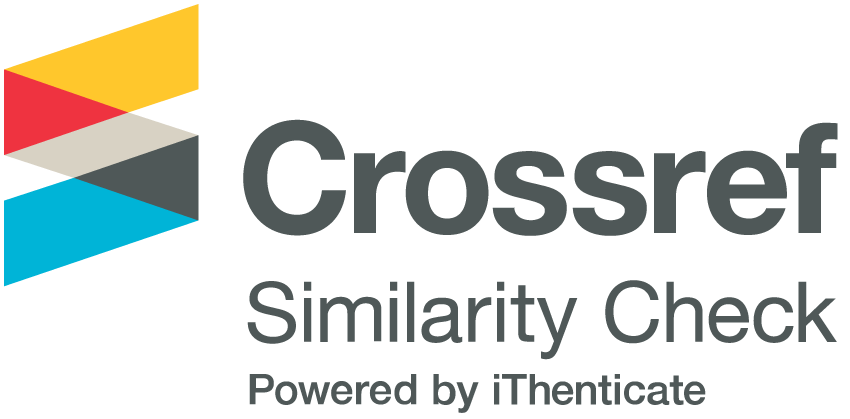El uso de la narrativa pública como medio para facilitar la formación de equipos en el desarrollo del liderazgo y la organización comunitaria
DOI:
https://doi.org/10.54790/rccs.79Palabras clave:
narrativas públicas, liderazgo, migrantes, equipo, organización, comunidadResumen
La narrativa pública es una práctica de liderazgo que se aprende y practica en diferentes contextos en todo el mundo. Este artículo profundiza en la utilización de la narrativa pública para la formación de equipos dentro de los ámbitos del liderazgo y la organización comunitaria. Profundizamos en el caso de We the People Michigan, una organización comunitaria, y su papel fundamental en la convocación de la coalición Drive Michigan Forward a través de la lente de la narrativa pública. Nuestros hallazgos resaltan el papel crucial de la narrativa pública en la mejora de dos aspectos críticos de la formación de equipos y la colaboración grupal efectiva. En primer lugar, compartir narrativas personales sirve para fomentar el entendimiento mutuo. En segundo, facilita un cambio desde las necesidades específicas de las organizaciones individuales hacia un enfoque en los desafíos urgentes que enfrentan sus electores, particularmente la población de inmigrantes indocumentados en Michigan.
Descargas
Métricas
Citas
Aiello, E. & Joanpere, M. (2014). Social Creation. A New Concept for Social Sciences and Humanities. International and Multidisciplinary Journal of Social Science, 3(3), 297–313. https://doi.org/10.4471/rimcis.2014.41 DOI: https://doi.org/10.4471/rimcis.2014.41
Aiello, E. & Ganz, M. (2021). “2020 Public Narrative Impact Survey Overview Report”. Available online: https://ash.harvard.edu/publications/2020-public-narrative-impact-survey-overview-report?utm_campaign=coschedule&utm_source=twitter&utm_medium=HarvardAsh&utm_content=2020%20Public%20Narrative%20Impact%20Survey%20Overview%20Report
Alexander, J. C. (2012). The Meanings of Social Life: A Cultural Sociology. The Meanings of Social Life: A Cultural Sociology. Oxford University Press. https://doi.org/10.1093/acprof:oso/9780195160840.001.0001 DOI: https://doi.org/10.1093/acprof:oso/9780195160840.001.0001
Andrews, K. T., Ganz, M., Baggetta, M., Han, H. & Andrews, K. T. (2013). Leadership, Membership, and Voice : Civic Associations That Work. American Journal of Sociology, 115(4), 1191–1242. https://doi.org/10.1086/649060 DOI: https://doi.org/10.1086/649060
Benford, R. D. & Snow, D. D. (2000). Framing Processes and Social Movements: An Overview and Assessment. Annual Review of Sociology, 26, 611–639. https://doi.org/10.1146/annurev.soc.26.1.611 DOI: https://doi.org/10.1146/annurev.soc.26.1.611
Bradt, K. M. (1997). Story as a way of knowing. Kansas City, MO: Sheed & Ward.
Bruner, J. (1986). Actual Minds, Possible Worlds. Cambridge, Mass: Harvard University Press. https://doi.org/10.4159/9780674029019 DOI: https://doi.org/10.4159/9780674029019
Collins, R. (1993). Emotional Energy as the Common Denominator of Rational Action. Rationality and Society, 5(2), 203–230. Available online: https://doi.org/10.1177/1043463193005002005 DOI: https://doi.org/10.1177/1043463193005002005
Dao, L. (2017). Out and Asian: How Undocu/DACAmented Asian Americans and Pacific Islander Youth Navigate Dual Liminality in the Immigrant Rights Movement. Societies, 7(3), 17. https://doi.org/10.3390/soc7030017 DOI: https://doi.org/10.3390/soc7030017
Davis, J. (2002). Narrative and Social Movements. In Stories of Change. Narrative and Social Movements, 3–29. https://doi.org/10.1353/book4482 DOI: https://doi.org/10.1353/book4482
Delehanty, J. (2020). Becoming “People of Faith:” Personal Moral Authenticity in the Cultural Practices of a Faith-Based Social Justice Movement. Sociological Forum, 35(4), 1228-1249. https://doi.org/10.1111/socf.12645 DOI: https://doi.org/10.1111/socf.12645
Delehanty, J. & Oyakawa, M. (2018). Building a collective moral imaginary: Personalist culture and social performance in faith-based community organizing. American Journal of Cultural Sociology, 6, 266–295. https://doi.org/10.1057/s41290-017-0029-7 DOI: https://doi.org/10.1057/s41290-017-0029-7
Emirbayer, M. (1997). Manifesto for a Relational Sociology. American Journal of Sociology, 103(2), 281–317. https://doi.org/10.1086/231209 DOI: https://doi.org/10.1086/231209
Emirbayer, M. & Mische, A. (1998). What Is Agency? American Journal of Sociology, 103(4), 962–1023. https://doi.org/10.1086/231294 DOI: https://doi.org/10.1086/231294
Gamson, W. A. (1988). Political Discourse and Collective Action. International Social Movement Research, 219–244.
Ganz, M. (2009). Why David sometimes wins. Strategy, leadership and The California Agricultural Movement. New York, NY: Oxford University Press.
Ganz, M. & McKenna, E. (2018). Bringing Leadership Back In. In D. A. Snow, S. A. Soule, H. Kriesi & H. J. McCammon (Eds.), The Wiley Blackwell Companion to Social Movements, 185–202. Chichester, UK: John Wiley & Sons, Ltd. https://doi.org/10.1002/9781119168577.ch10 DOI: https://doi.org/10.1002/9781119168577.ch10
Ganz, M. & Lin, E. (2011). Learning to Lead: Pedagogy of Practice. In N. Nohria, R. Khurana & S. Snook (Eds.), Handbook for Teaching Leadership. Los Angeles: SAGE Publications (353-366).
Goldstein, B. E., Wessells, A. T., Lejano, R. & Butler, W. (2015). Narrating Resilience: Transforming Urban Systems Through Collaborative Storytelling. Urban Studies, 52(7), 1285–1303. https://doi.org/10.1177/0042098013505653 DOI: https://doi.org/10.1177/0042098013505653
Goodwin, J. & Jasper, J. M. (1999). Caught in a Winding, Snarling Vine: The Structural Bias of Political Process Theory. Sociological Forum, 14(1), 27–54. https://doi.org/10.1023/A:1021684610881 DOI: https://doi.org/10.1023/A:1021684610881
Gouge, M. C. (2016). Human Rights in Play, Transnational Solidarity at Work: Creative Playfulness and Subversive Storytelling among the Coalition of Immokalee Workers. Critical Sociology, 42(6), 861–875. https://doi.org/10.1177/0896920515603110 DOI: https://doi.org/10.1177/0896920515603110
Han, H., Andrews, K. T., Ganz, M., Baggetta, M. & Lim, C. (2011). The Relationship of Leadership Quality to the Political Presence of Civic Associations. Perspectives on Politics, 9(01), 45–59. https://doi.org/10.1017/S1537592710004081 DOI: https://doi.org/10.1017/S1537592710004081
Jasper, J. M. (2011). Emotions and Social Movements: Twenty Years of Theory and Research. Annual Review of Sociology, 37(1), 285–303. https://doi.org/10.1146/annurev-soc-081309-150015 DOI: https://doi.org/10.1146/annurev-soc-081309-150015
Jasper, J. M. (2010). Social Movement Theory Today: Toward a Theory of Action? Sociology Compass, 4(11), 965–976. https://doi.org/10.1111/j.1751-9020.2010.00329.x DOI: https://doi.org/10.1111/j.1751-9020.2010.00329.x
Keen, S. (2006). A Theory of Narrative Empathy. Narrative. The Ohio State University Press, 14(3), 207–236. Available online: https://doi.org/10.1353/nar.2006.0015 DOI: https://doi.org/10.1353/nar.2006.0015
McAdam, D., McCarthy, J. D. & Zald, M. N. (1996). Comparative Perspectives on Social Movements. Comparative Perspectives on Social Movements. Cambridge University Press. https://doi.org/10.1017/cbo9780511803987 DOI: https://doi.org/10.1017/CBO9780511803987
Mead, G. (1934). Mind, Self and Society. Chicago: University of Chicago Press.
Nussbaum, M. C. (2001). Upheavals of Thought. Upheavals of Thought. Cambridge University Press. https://doi.org/10.1017/cbo9780511840715 DOI: https://doi.org/10.1017/CBO9780511840715
Pande, A. (2012). From “balcony talk” and “practical prayers” to illegal collectives: Migrant Domestic Workers and Meso-Level Resistances in Lebanon. Gender & Society, 26(3), 382-405. https://doi.org/10.1177/0891243212439247 DOI: https://doi.org/10.1177/0891243212439247
Polletta, F. (1998). Contending Stories: Narrative in Social Movements. Qualitative Sociology, 21(4), 419–446. https://doi.org/10.1023/A:1023332410633 DOI: https://doi.org/10.1023/A:1023332410633
Polletta, F. (2008). Culture and Movements. Annals of the American Academy of Political and Social Science, 619, 78–96. https://doi.org/10.1177/0002716208320042 DOI: https://doi.org/10.1177/0002716208320042
Polletta, F. & Jasper, J. M. (2001). Collective Identity and Social Movements. Annual Review of Sociology, 27(1), 283–305. https://doi.org/10.1146/annurev.soc.27.1.283 DOI: https://doi.org/10.1146/annurev.soc.27.1.283
Ricoeur, P. (1992). Oneself as another. Oneself as Another. London: The University of Chicago Press.
Skocpol, T. (2003). Diminished Democracy: From membership to management in american civic life. Oklahoma: University of Oklahoma Press.
Smith, C. (2003). Moral, Believing Animals: Human Personhood and Culture. Moral, Believing Animals: Human Personhood and Culture. New York: Oxford University Press. https://doi.org/10.1093/acprof:oso/9780195162028.001.0001 DOI: https://doi.org/10.1093/acprof:oso/9780195162028.001.0001
Somers, M. R. (1994). The narrative constitution of identity: A relational and network approach. Theory and Society, 23(5), 605–649. https://doi.org/10.1007/BF00992905 DOI: https://doi.org/10.1007/BF00992905
Steffens, N. K., Haslam, S. A. & Reicher, S. D. (2014). Up close and personal: Evidence that shared social identity is a basis for the “special” relationship that binds followers to leaders. Leadership Quarterly, 25(2), 296–313. https://doi.org/10.1016/j.leaqua.2013.08.008 DOI: https://doi.org/10.1016/j.leaqua.2013.08.008
Welton, A. D. & Freelon, R. (2018). Community Organizing as Educational Leadership: Lessons From Chicago on the Politics of Racial Justice. Journal of Research on Leadership Education, 13(1), 79–104. https://doi.org/10.1177/1942775117744193 DOI: https://doi.org/10.1177/1942775117744193
Descargas
Publicado
Cómo citar
Número
Sección
Licencia
Derechos de autor 2024 Emilia Aiello-Cabrera, Nelly Fuentes

Esta obra está bajo una licencia internacional Creative Commons Atribución-NoComercial-CompartirIgual 4.0.










